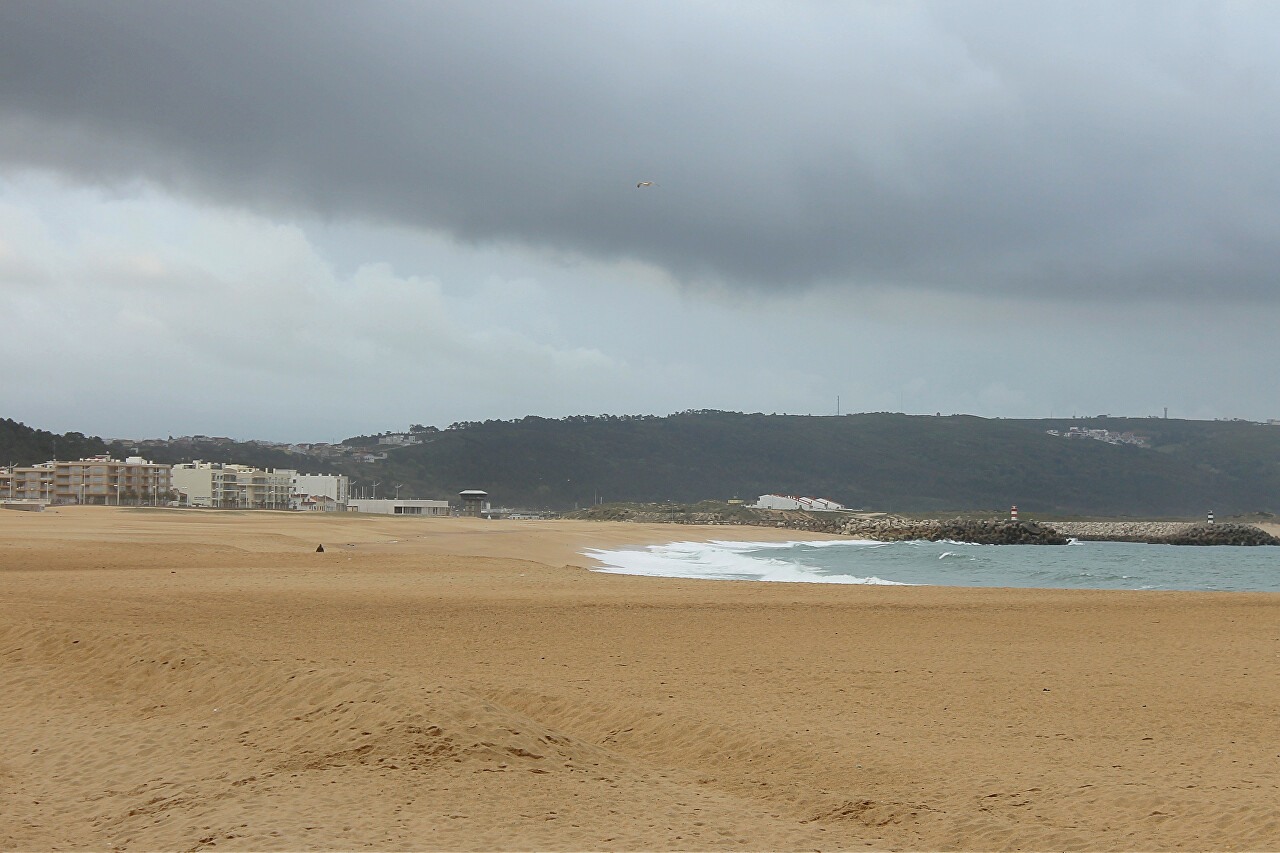Nazaré in Early May
The small resort town is located a hundred kilometers from Lisbon, and at the same distance from Coimbra. We arrived here late at night, just for an overnight stay in one of the local hotels. The departure was scheduled right after breakfast, so I got up early to get a general idea of the place.
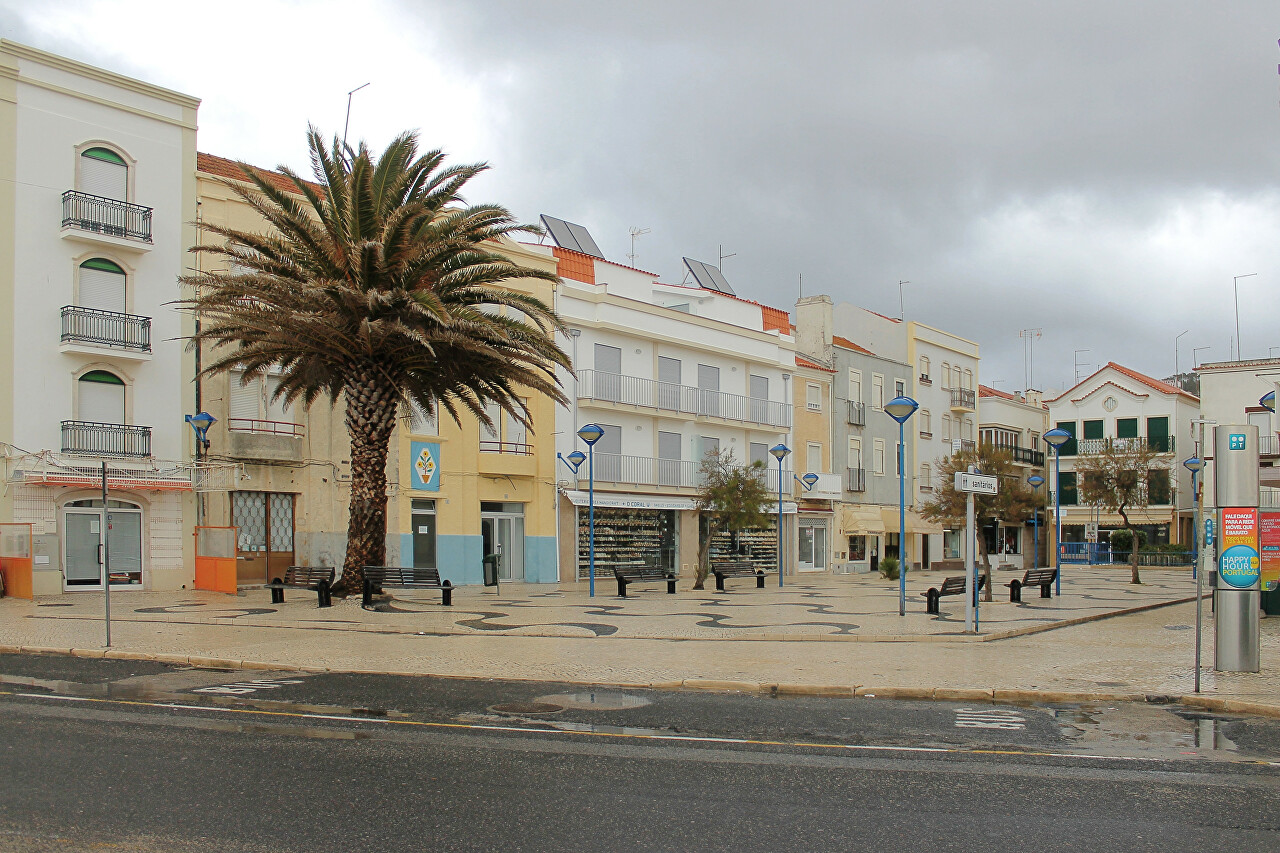
Nazaré is located on the Atlantic coast, so I first went to the beach, which turned out to be very wide. I had to walk along the sand to the water about two hundred paces.
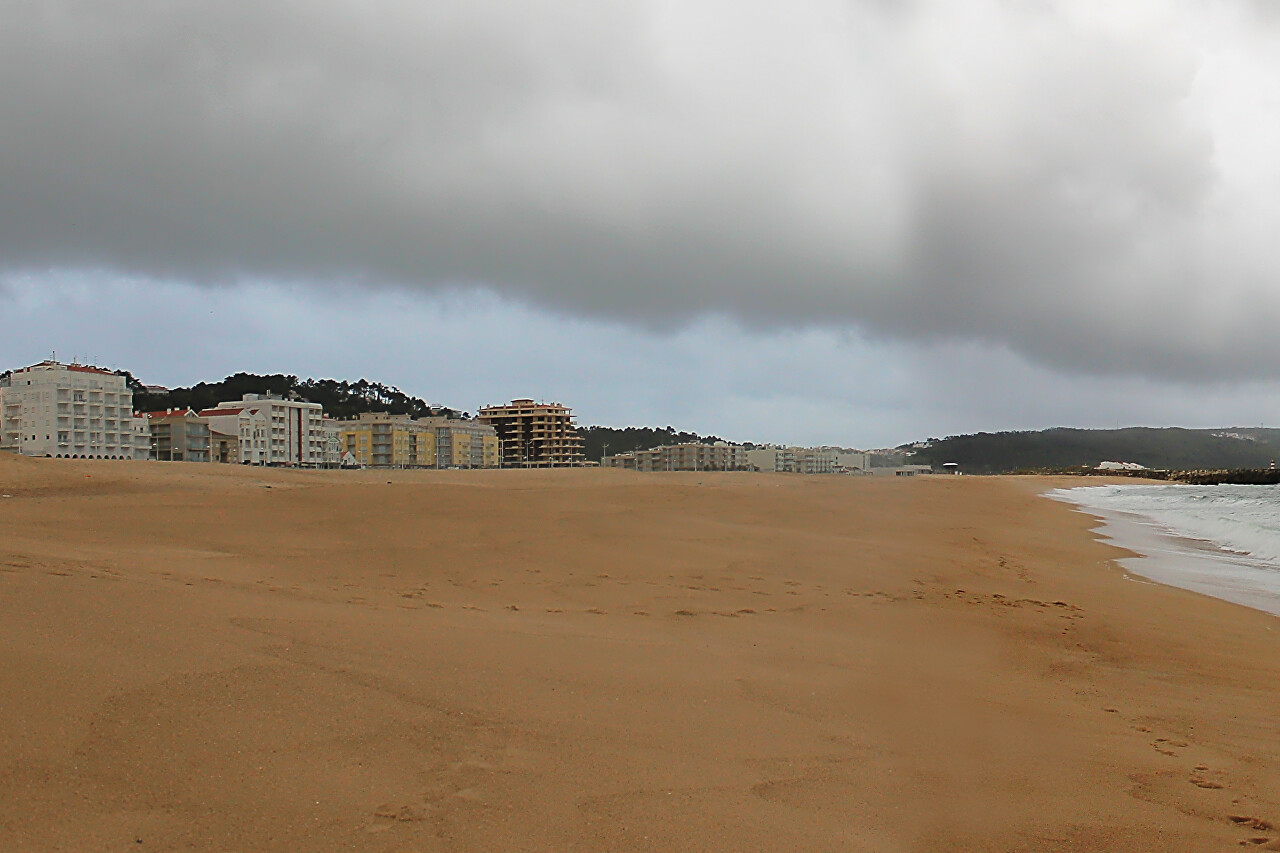
The beaches of Nazaré are considered the best in Portugal, covered with soft golden sand and their width at low tide reaches 200 meters. Unfortunately, the holiday season is not very long, it starts in mid-June and lasts until the end of September, but this is typical for all Atlantic resorts.
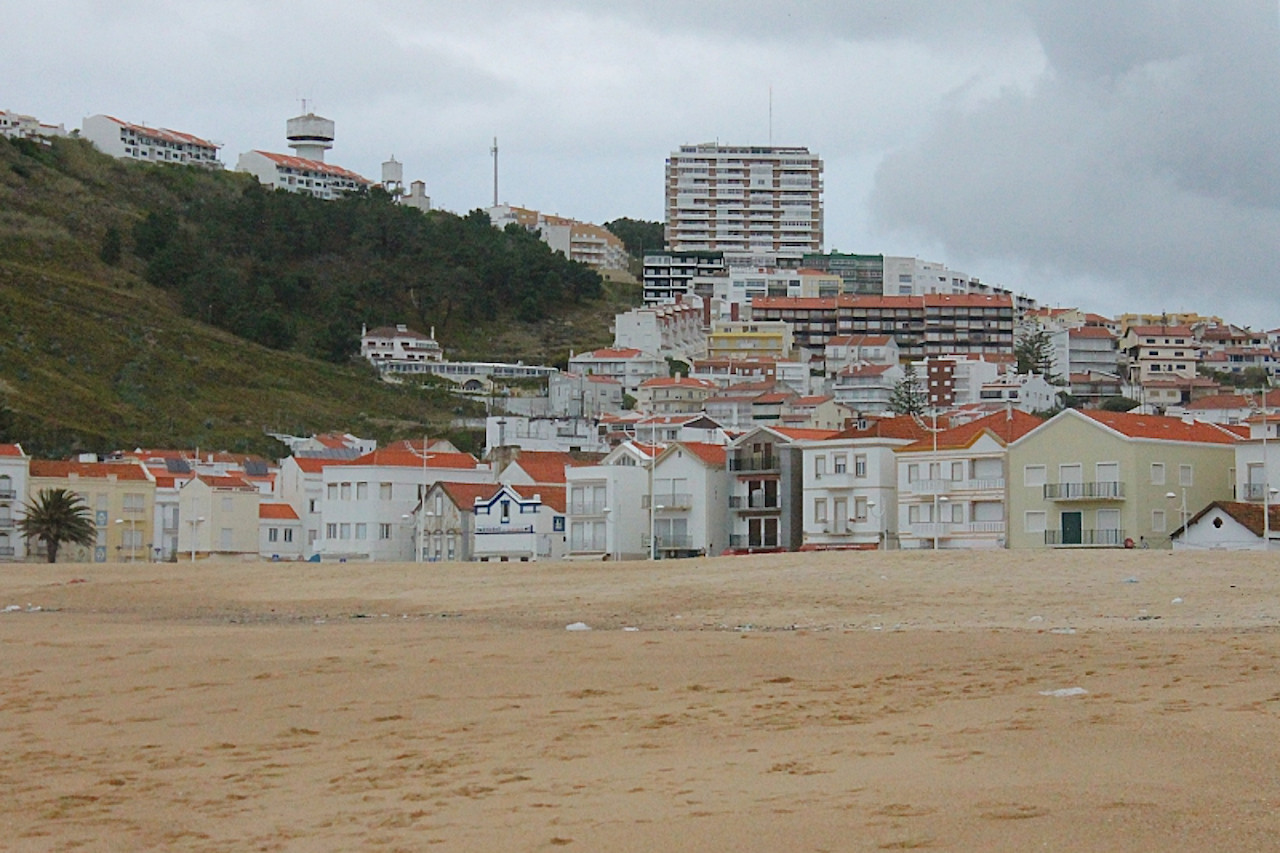
But the city has another highlight: thanks to the unique topography of the sea floor near Nazare, waves up to 30 meters high are formed here, attracting surfers all year round.
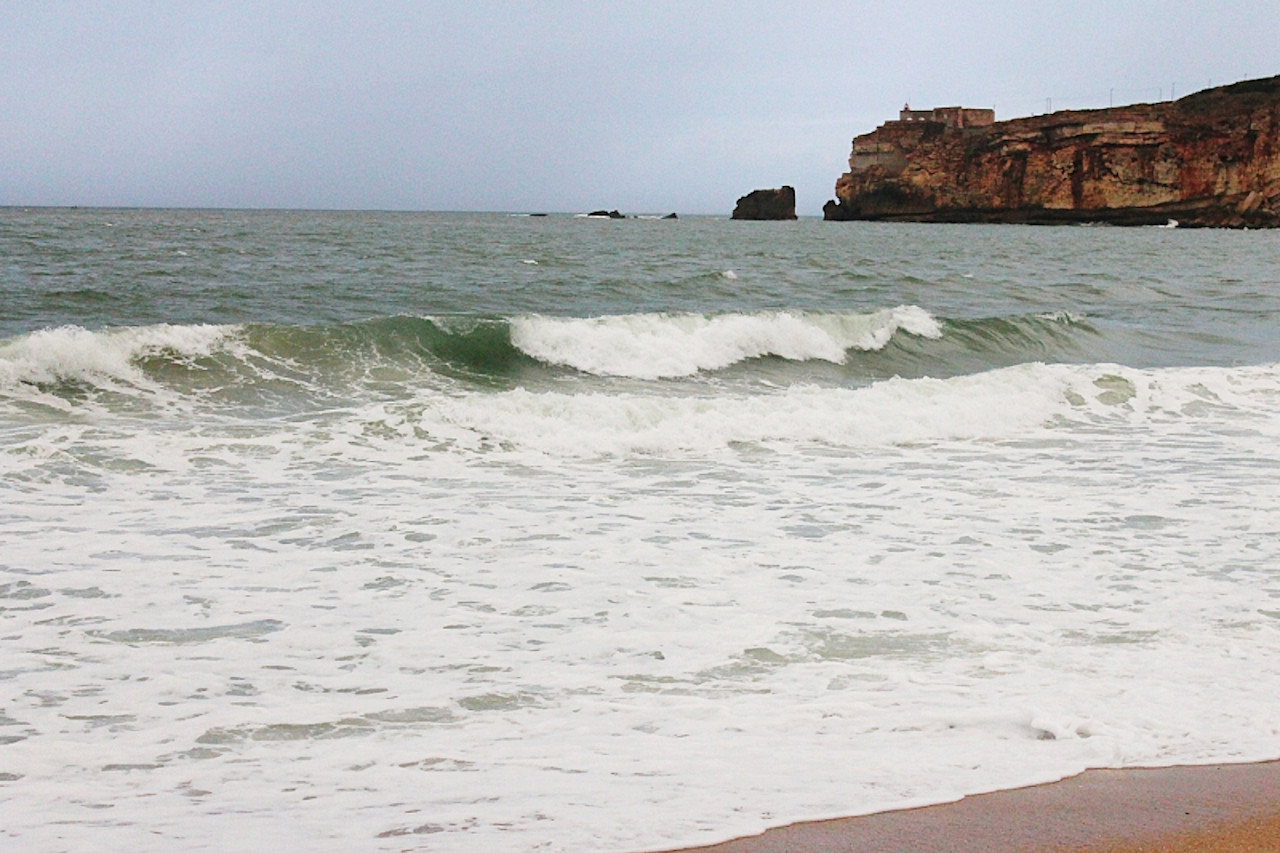
I've been to the Mediterranean and the Black Sea, and I've seen a storm in the Baltic, but this is the first time I've seen ocean waves, and I was very impressed. The ground trembled under their feet as they rolled, and it was eerie to approach the water.
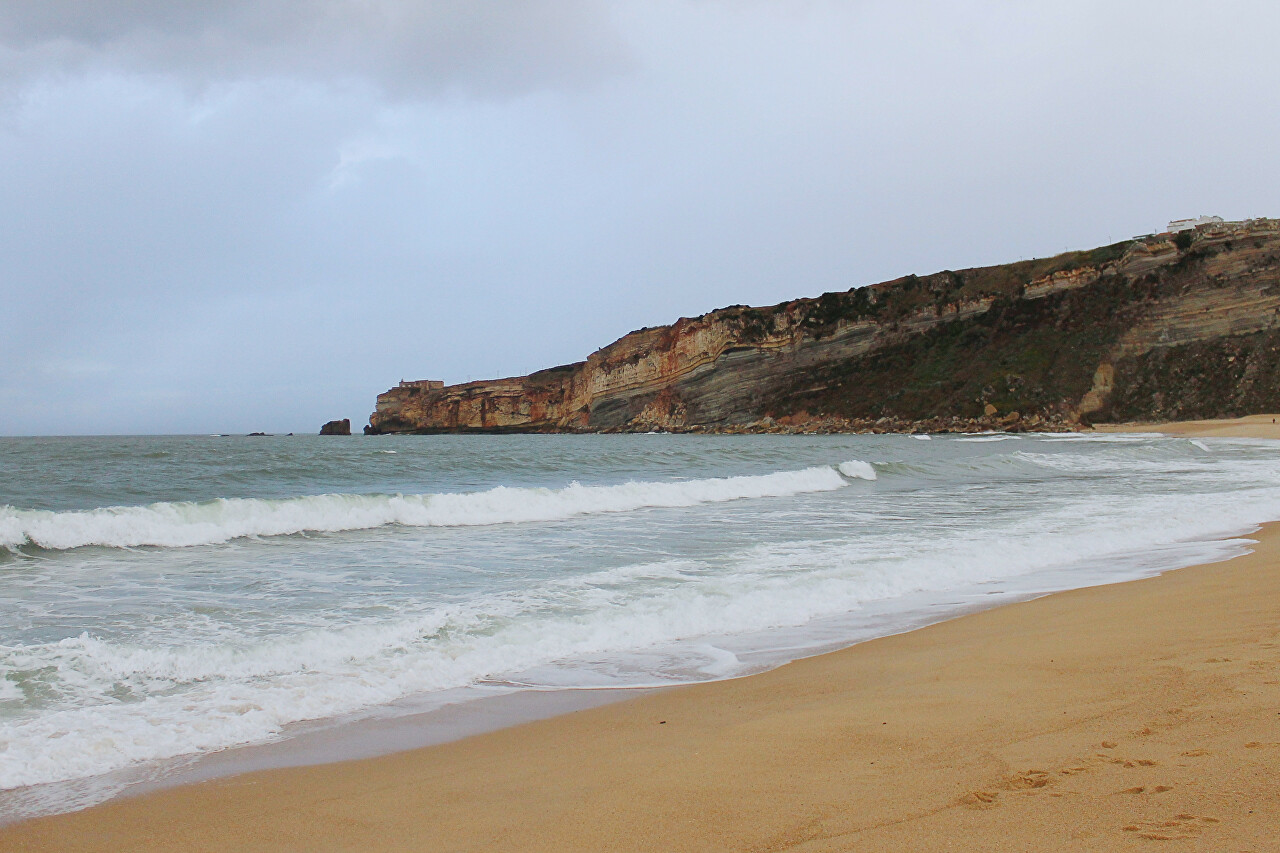
It was completely deserted, except for the gray Atlantic gulls that roamed the sand at the surf's edge.
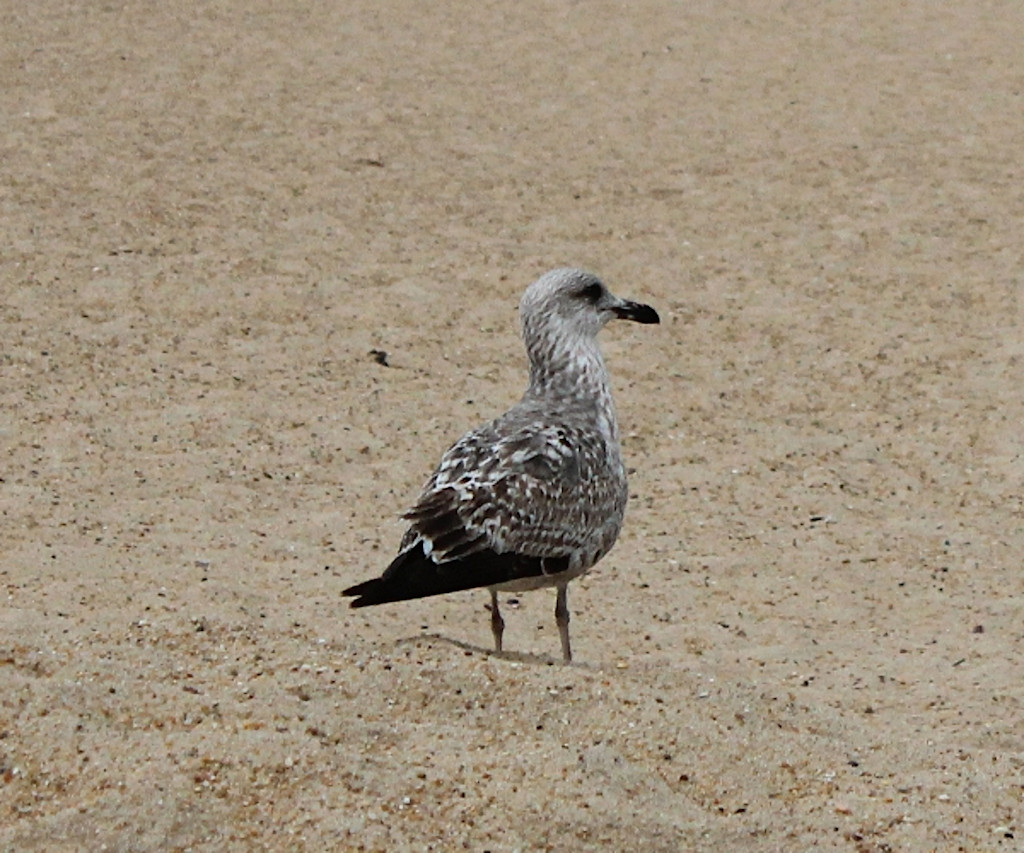
The city gets its name from a small wooden statue of the Virgin Mary brought by a monk in the 4th century from Nazareth to a monastery near the city of Merida in Spain. In 711, two monks, evangelists Romano and Roderick, moved the statue to a grotto on the Atlantic coast of Portugal, settling there as hermits. After the death of the monks, the statue remained in the grotto and became an object of pilgrimage.
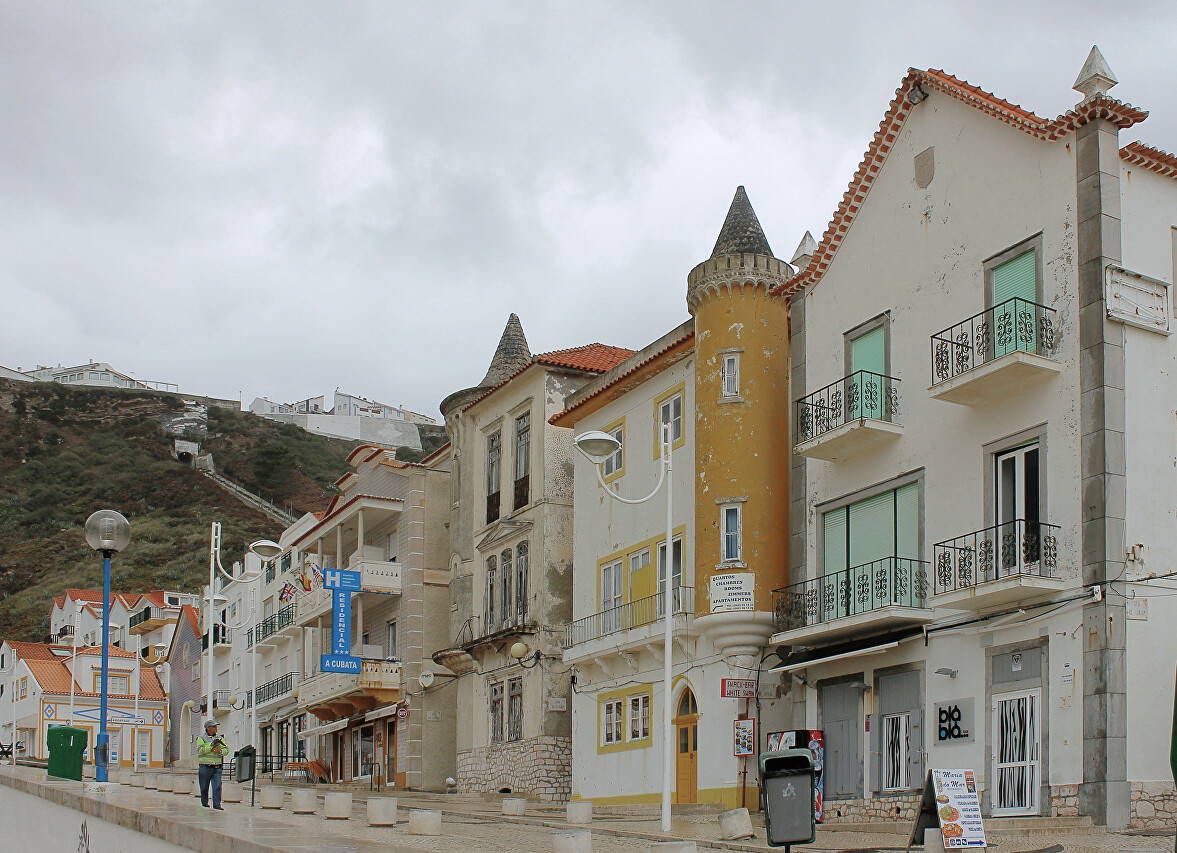
In 1182, there was an episode known as"The Legend of Nazar". The Knights Templar organized a deer hunt in this area. As is often the case in these parts, a thick fog came from the sea, and one of the knights lost his direction and continued to ride in the impenetrable darkness. Suddenly his horse stopped and did not want to go any further. The knight dismounted, and after walking a couple of steps, he saw a cliff under a curtain of fog. It was impossible to call it anything but a miracle, and the knight connected his salvation with the image of the Virgin Mary of Nazareth, whose statuette was located in a grotto under a cliff. In memory of this event, the Templars erected a chapel, and in 1377 a church was built nearby, around which the settlement was formed.
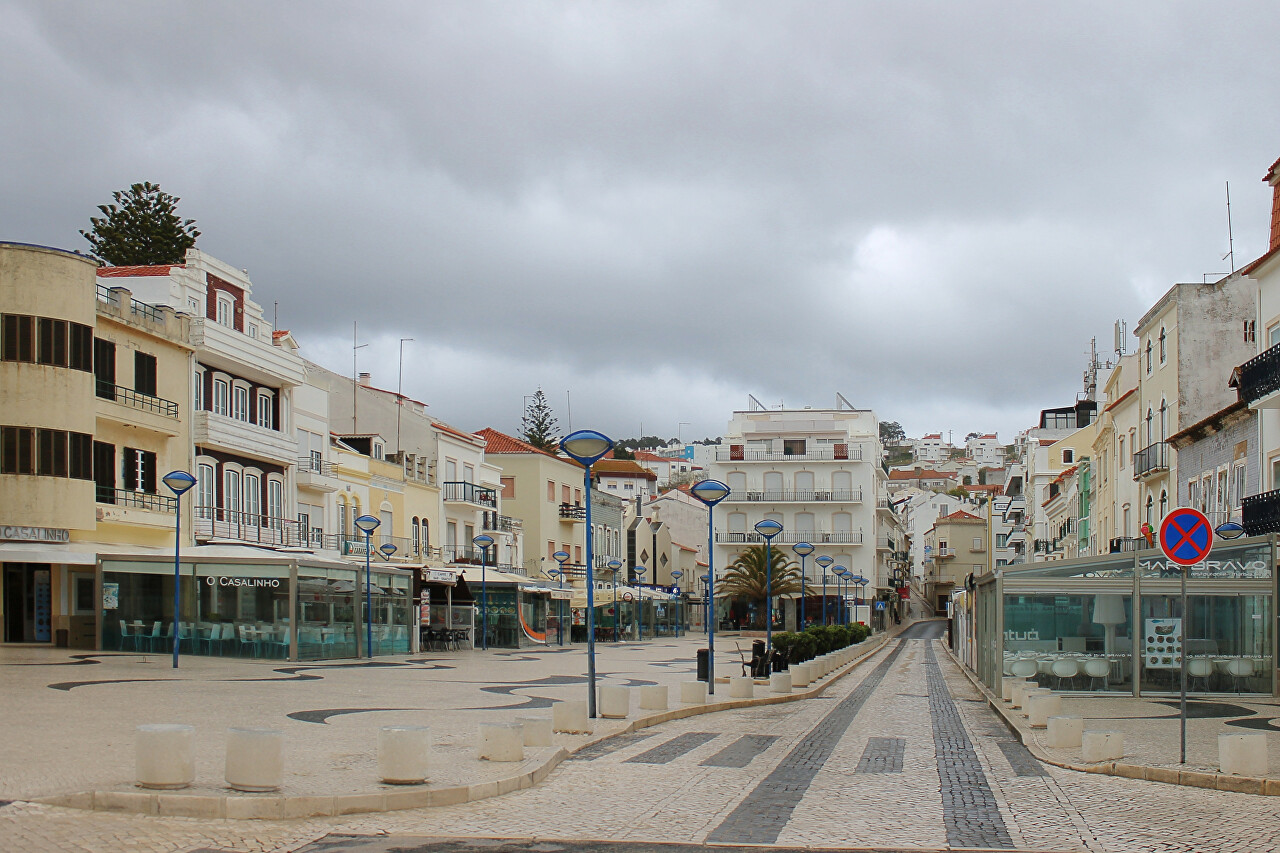
The old town is located on a high bank, accessible by the Ascensor da Nazare funicular, opened in 1889. The track is 318 meters long and has a slope of 42%. The cars were driven by a steam engine installed at the upper station.
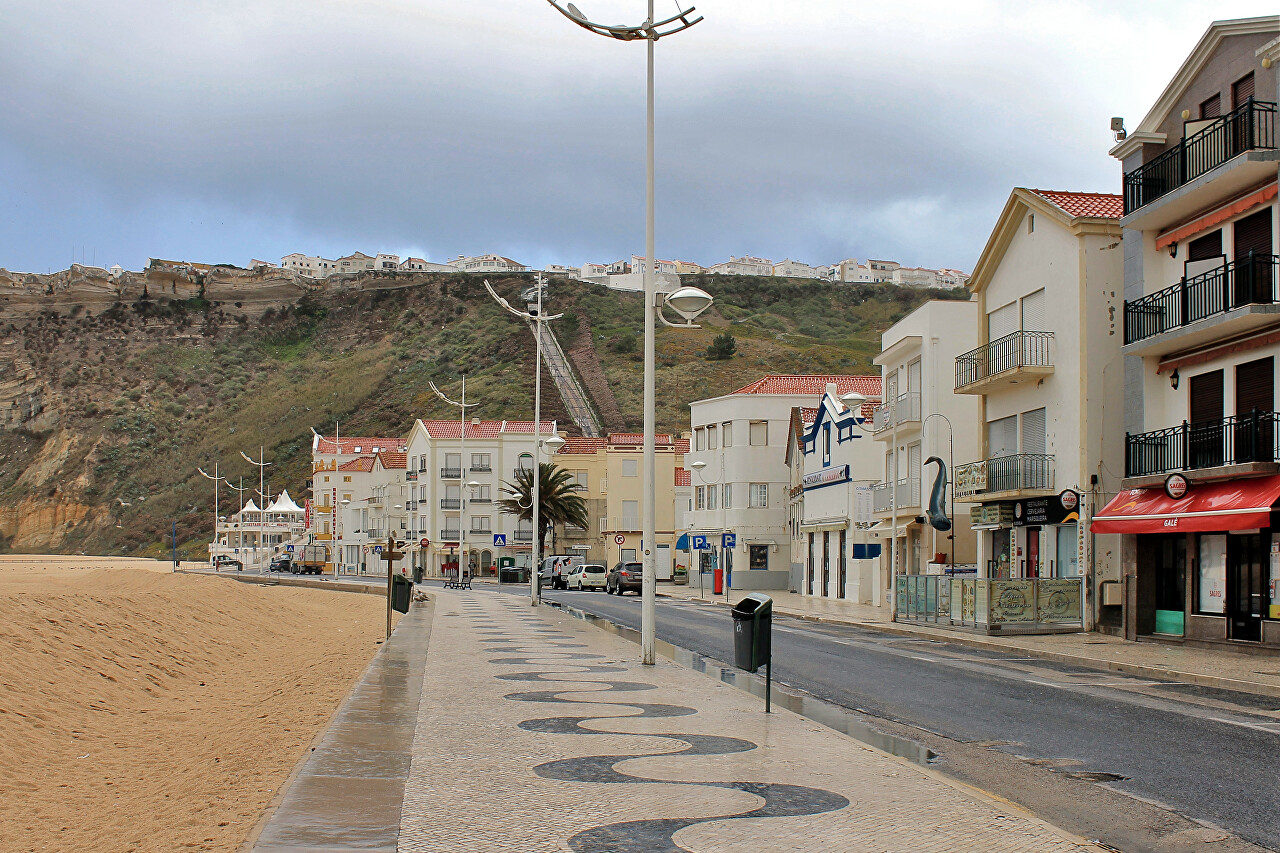
The lift functioned properly until 1963, when there was a disaster with human casualties. After that, the funicular was idle for five years, but in 1968, after reconstruction and electrification, it was reopened.
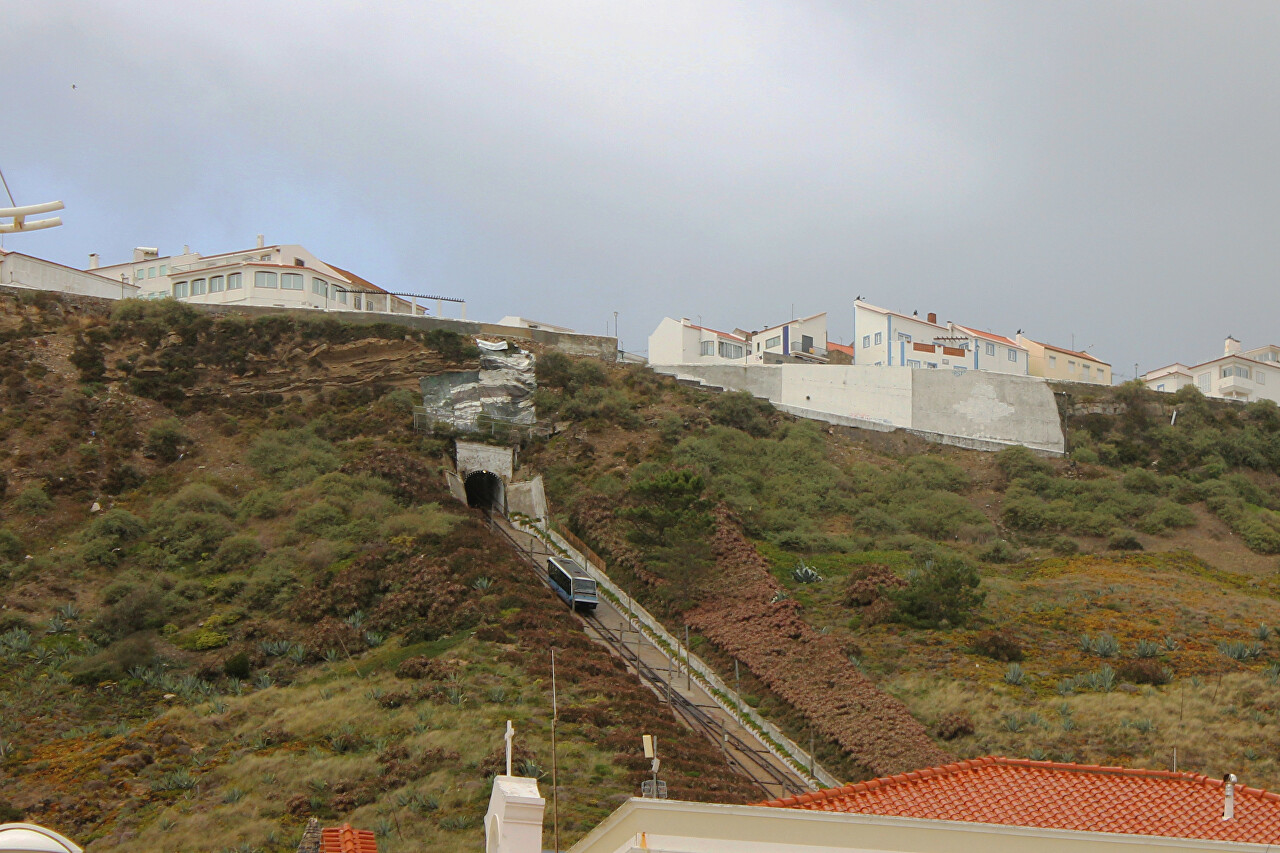
At the end of a promontory far out to sea north of the current city center, the Fort of Sao Miguel Arcanjo was built in 1577 to protect against African and Norman pirates who raided the coast of Portugal until the early 19th century. During the war with Napoleon, the fort was occupied by the French, but they were driven out by simple Portuguese peasants armed with pitchforks.
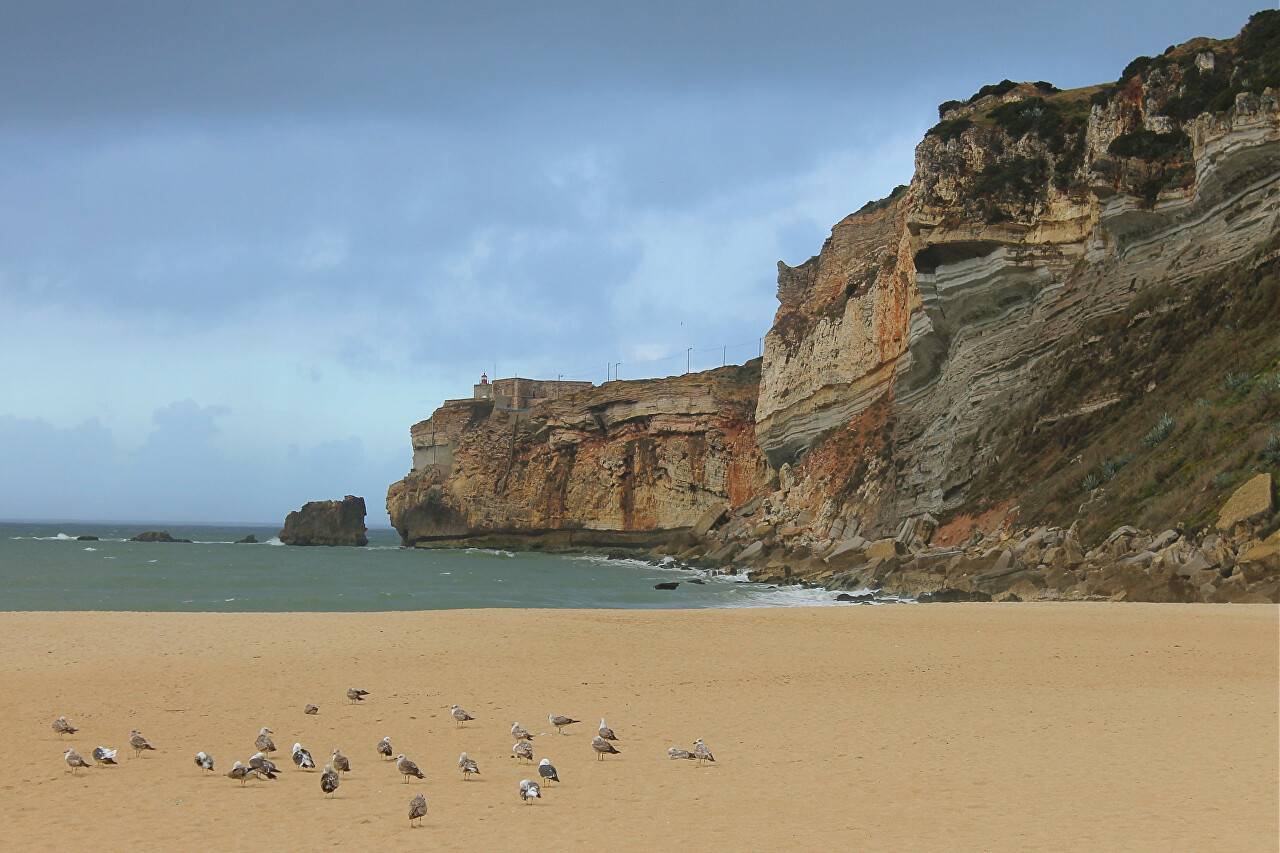
The day was overcast, the usual spring weather on the Atlantic coast. The maximum amount of precipitation falls in March, in April and May it rains less, but the sun does not look out from behind the clouds too often.
